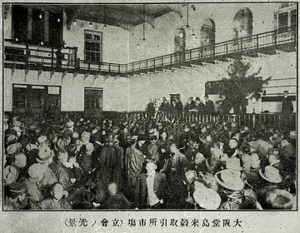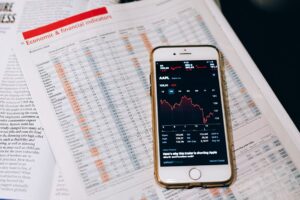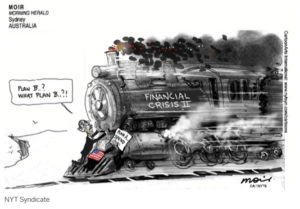
Deriving Value
The number one rule of money management is simple. Don’t lose money. The second rule is easy to remember but a challenge to accomplish; don’t forget rule number one.[1] The backbone of stock and bond valuation lies with discounting future expected cash flows to a present value, either negative or positive, that is used to determine whether a particular investment should be undertaken. However, deriving a value using any form of discounted cash flow analysis involves many moving parts and assumptions. For example, just a small deviation between expected inflation and actual inflation will result in a wildly different terminal stock value than what was originally calculated, making deriving value feel like throwing a dart at a board blindfolded. Additionally, the lack of cohesion between international (IFRS)[2] and domestic (US GAAP)[3] accounting standards makes comparing balance sheets and income statements of global companies an increasingly difficult task. If deriving value is riddled with such challenges, then how are money managers to accomplish rule numbers one and two?
A Dangerous Journey
Capital preservation and risk reduction are paramount to professional wealth managers. In fact, the roots of risk reduction have had its presence in capital markets since the formation of the first jointly-held stock company in 1602, the United Dutch Chartered East India Company (Vereenigde Nederlandsche Geoctroyeerde Oostindische Compagnie, or VOC for short). The fourteen-month roundtrip from the Netherlands to the East Indies to gather supplies (spices) for exchange in Amsterdam posed a major risk to individual merchants. Of the twenty-two ships that set sail in 1598, only a dozen returned safely. The pooling of capital allowed individual merchants to form a company with many other merchants whose intent was to conduct business in the spice trade. This pooling of resources and limitation of one’s losses to only their original investment increased the probability of success and lowered the chance of failure. From 1602 to 1733, VOC’s stock price rose from par (100) to an all-time high of 786. By 1650, total dividend payments to shareholders equated to 8 times the original investment, implying an annual rate of return of 27%. Since VOC’s corporate charter did not specifically state what a shareholder may do after the lock-up period to hold stock was over, buying and selling between shareholders began and the first stock market was created.[4] The journey for Dutch merchants became less arduous and more prosperous thanks to risk reduction via investing in a limited liability company.

The First of Its Kind
Today, reducing risk in capital markets requires the assistance of the derivatives market. The introduction of a type of derivative known as a futures contract first found its risk-reducing capabilities in Japan. Shortly after VOC’s success as one of mankind’s first jointly-held stock company and the realization that business risk can be reduced, the creation of the first organized futures market in 1730, located at the Dojima Rice Market in Osaka, Japan, allowed Japanese rice merchants a chance to hedge against unexpected price changes in rice due to extreme weather and unpredictable crop yields.[5] A futures contract is based upon an agreement to buy or sell assets, in this case, rice, on a future date for settlement and delivery. For example, if a rice farmer expected a drop in the market price of a koku[6] of rice due to a better than average harvest, they may sell short a rice futures contract to profit from the decline in price, hedging against the loss in revenue from their rice business. Forward contracts were also introduced during this time period, another derivative used to hedge risk. A forward contract is a type of derivative that is customizable between two parties based on the agreement to buy or sell an asset at a specified price on a future date. Farmers have forwards and futures, but what about today’s retail investors?

An Option to Hedge
An investor in the capital markets can either buy a company’s bond and/or shares of its stock. Buying the bond and shares of stock of the same company will reduce the risk of the total investment due to the negative correlation of returns between bonds and stocks and legal obligation to make payments to the bondholders first before stockholders which will lower the unpredictability of cash flows to the portfolio. While shares of stock typically yield a greater return than a bond, that return does not come without risk. The ability to reduce risk on shares of stock an investor may own is allowable via the derivatives market. Pairing option contracts with shares of stock may allow investors to hedge unrealized losses during periods of volatility. Option contracts are believed to have been used before 350 B.C. by Thales of Miletus, who is said to have made a fortune buying options on the right to use olive presses before a strong harvest.[7] An option contract, a call or put, is another derivative that is based upon the right to buy or sell an asset, generally shares of stock, at an agreed-upon strike price for settlement on the expiration date (European-style options) or any time before the expiration date (American-style options). 25.2 billion futures and options contracts were traded in 2017 worldwide[8], indicating that knowledgeable capital market participants understand the risk-reduction capabilities and usefulness of derivatives. Subnani Investment Research, LLC utilizes options to hedge portfolios and offers these investment services to prospective clients.
Bonded
The first known record of a bond and its obligations to its holders dates back five thousand years ago to Mesopotamia.[9] Clay tokens were used to keep records of transactions that involved the exchange of barley, wool, or metals. As of 2010, the total amount of outstanding debt and equity was almost $212 trillion globally. Fixed-income, or bonds, represented three-fourths of the $212 trillion total, indicating that the bond market is three times larger than the stock market.[10] While liquidation preference or receiving your money back first in the event of a bankruptcy, is a positive to bondholders over stockholders, bonds carry credit risk as the outcome of any business venture is unknown. Professional money managers can utilize the derivatives market and enter into a swap contract, a derivative used to reduce risk typically limited to bond investments. Swaps are unlikely to be utilized by retail investors as they are traded OTC (over-the-counter) and are highly illiquid. Reducing risk using swaps comes in multiple forms including interest rate swaps, swaptions, credit default swaps, commodity swaps, and equity swaps. If the credit risk of a borrower is too much to bear for an investment manager, the manager may purchase a credit default swap. The credit default swap will shift the credit risk of the borrower, in the event they cannot make payments, to the seller of the swap. The investment manager will be able to reduce the credit risk of the bond holding by utilizing the derivatives market.

Why It Matters
The derivatives market is a critical tool for professional money managers in trying to abide by rules number one and two. Insurance companies reduce risk by selling off risky assets in the reinsurance market. Market-makers and dealers of securities reduce risk by taking offsetting positions in firm accounts. The investing public is deserving of professionals that understand risk reduction and can carry out such a plan to their benefit. Prospective clients will have understood that taking on risk in the capital markets can be hedged by using the derivatives market. Subnani Investment Research, LLC will assist and educate current and future clients on the risks and benefits of using derivatives in a portfolio and welcomes the investing public to reduce risk as effectively as possible by becoming a client today.
References:
[1] https://www.investopedia.com/financial-edge/0210/rules-that-warren-buffett-lives-by.aspx
[2] International Financial Reporting Standard
[3] United States Generally Accepted Accounting Principles
[4] Ferguson, Niall. The Ascent of Money: A Financial History of the World. Penguin Books, 2008.
[5] Moss, David A., and Eugene Kintgen. “The Dojima Rice Market and the Origins of Futures Trading.” Harvard Business School Case 709-044, January 2009. (Revised November 2010.)
[6] The standard trading unit of rice, equivalent to approximately 180 liters.
[7] http://www.finra.org/investors/ancient-greece-wall-street-brief-history-options-market
[8] https://fia.org/articles/total-2017-volume-252-billion-contracts-down-01-2016
[9] Ferguson, Niall. The Ascent of Money: A Financial History of the World. Penguin Books, 2008.
[10] Charles Roxburgh, Susan Lund, and John Piotowski, “Mapping Global Capital Markets,” McKinsey & Company (2011). $212 trillion is based on 79 countries and includes the market capitalization of stock markets.







